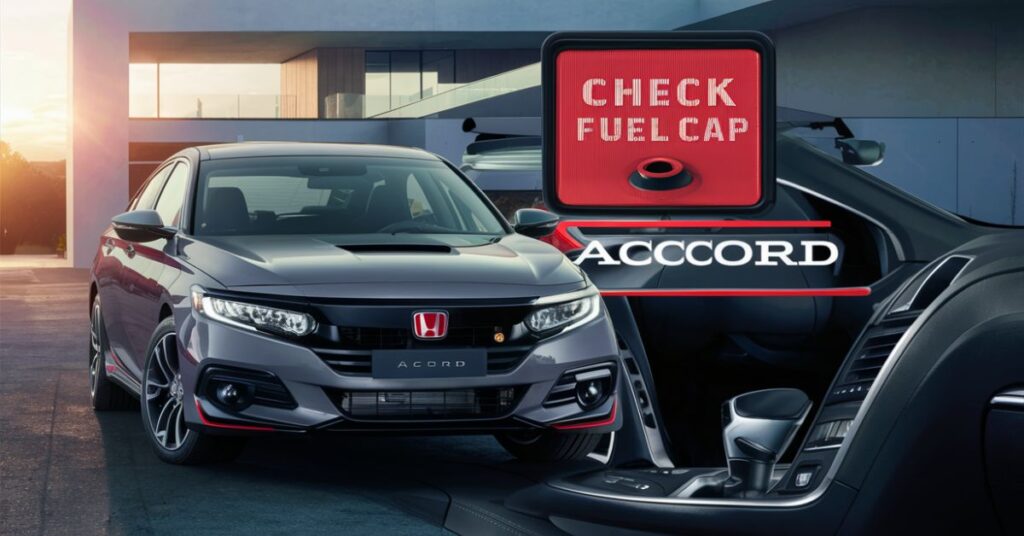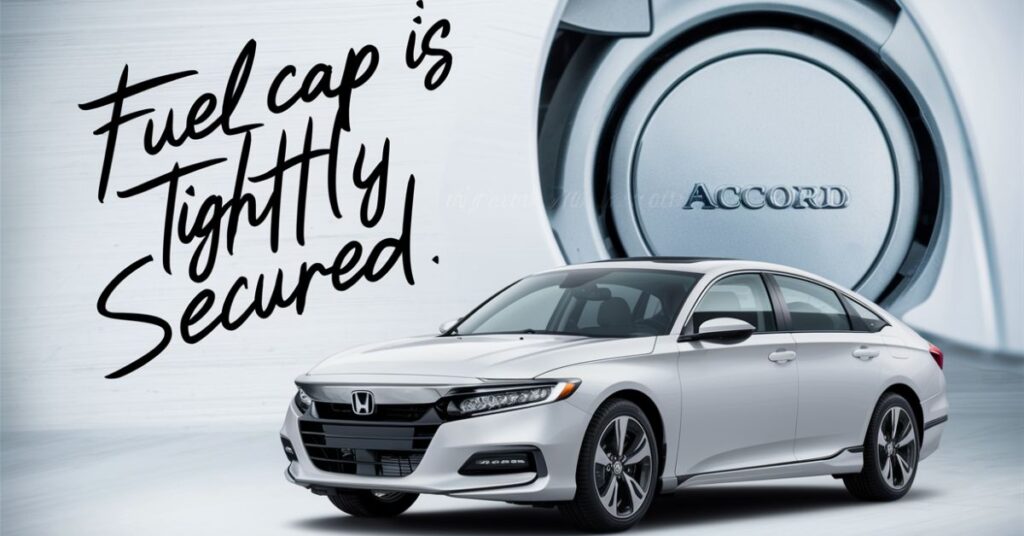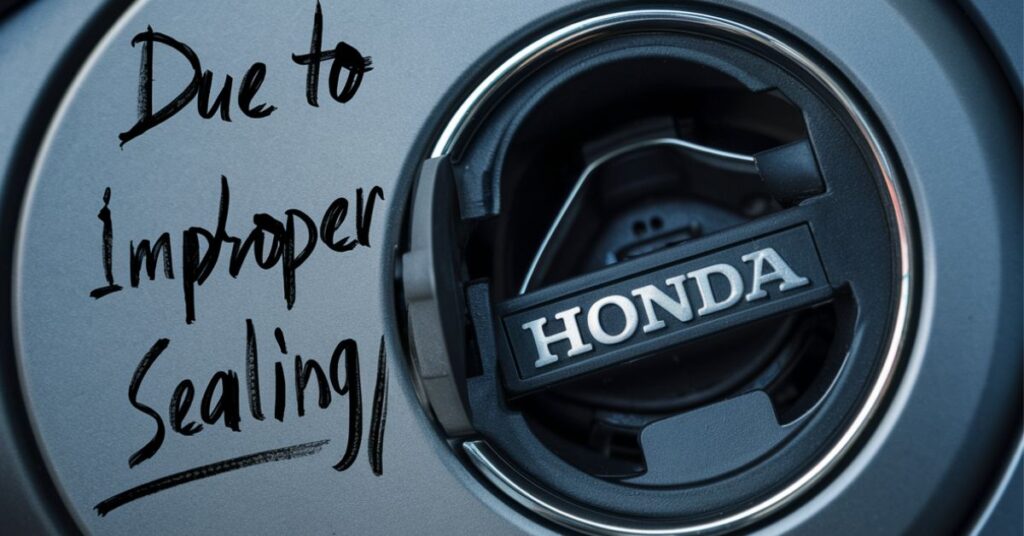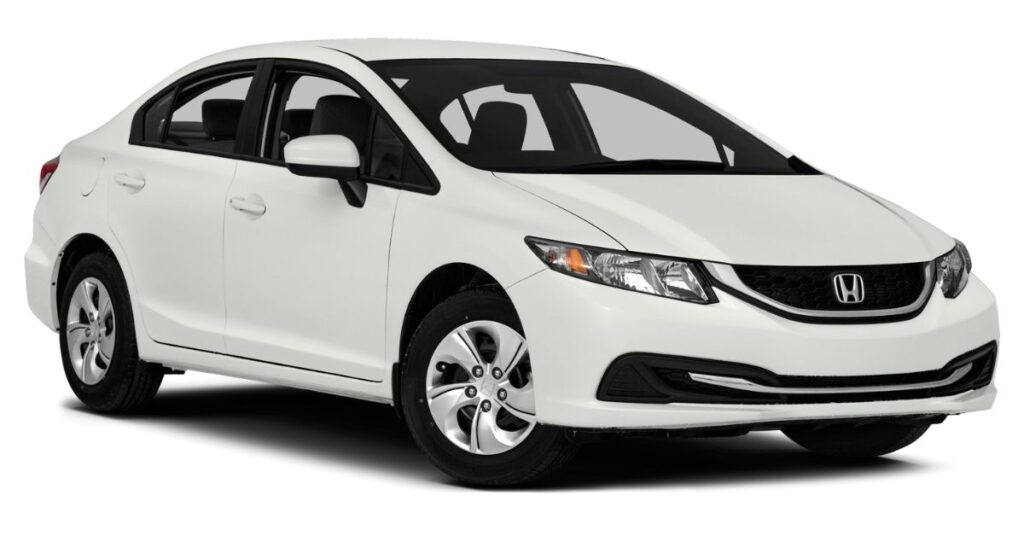The “Fuel Cap Warning Light” is an indicator on a vehicle’s dashboard that alerts the driver to potential issues with the fuel cap, such as it being loose, missing, or not properly sealed, which can lead to fuel vapor leakage and trigger emissions-related problems.
Wondering about that pesky “Check Fuel Cap” light on your dashboard? This little warning could mean your fuel cap isn’t sealing properly, leading to potential emissions issues. Let’s dive in to uncover what’s causing this signal and how to fix it.
The “Check Fuel Cap” warning light typically indicates a problem with the sealing of the fuel cap on your vehicle. This issue can arise from a loose, missing, or improperly sealed fuel cap, causing fuel vapor leakage and potential emissions-related problems. Ignoring this warning light could lead to decreased fuel efficiency and harm to the environment.
What Causes A Honda Accord ‘Check Fuel Cap’ Message?
When your Honda Accord displays a “Check Fuel Cap” message, it’s often due to issues with the vehicle’s Evaporative Emission Control Systems (EVAPs). These systems are designed to prevent harmful gases from escaping into the atmosphere, ensuring reduced pollution. The onboard computer and Engine Control Module (ECM) monitor the vacuum in the gas tank through sensors.

Commonly, the “Check Fuel Cap” alert indicates an EVAP leak detected by the sensor when the vacuum is compromised. This leak can result from various factors, including a loose, broken, or missing fuel cap. Ensuring the fuel cap is properly secured is essential to prevent fuel vapor from escaping and triggering the warning light.
If the issue persists, it’s crucial to inspect components like the purge valve, which plays a vital role in the EVAP system. This valve ensures that vapors are properly contained when the vehicle is turned off and allows them to enter the engine for combustion when running. Addressing these potential issues promptly can prevent further complications and ensure the proper functioning of your Honda Accord’s fuel system.
The Fuel Cap Is Broken
If your fuel cap is broken, it can lead to fuel vapor leakage and trigger the Check Fuel Cap warning light. This issue often arises from wear and tear on the rubber seals, compromising the cap’s ability to seal properly. Ensure to replace the broken fuel cap promptly to maintain the integrity of your vehicle’s fuel system and prevent emissions-related problems.
The Fuel Cap Is Loose
If your fuel cap is loose, it can cause the Check Fuel Cap warning light to illuminate on your dashboard. This issue typically occurs when the cap isn’t securely tightened after refueling. To resolve it, ensure you tighten the fuel cap firmly until you hear it click, preventing fuel vapor from escaping and triggering the warning.
The Fuel Cap Is Missing
If your fuel cap is missing, it can lead to fuel vapor leakage and trigger the Check Fuel Cap warning light. This issue commonly arises after refueling when the cap isn’t replaced properly. To fix it, promptly replace the missing fuel cap to maintain your vehicle’s fuel system integrity and prevent emissions-related problems.
Read This Blog:Rena Monrovia When You Transport Something by Car
Repairing the Honda Accord’s Check Fuel Cap Light
- Start your Accord’s engine and watch for the light. If it stays on, check the cap after a few seconds. Remember to turn off the engine first.
- Open the fuel door from the driver’s side floorboard and inspect the cap. Turn it counterclockwise to remove it and check for any issues.
- Consider replacing the cap if it’s old or damaged. Look for cracks or wear on the rubber seal. Genuine Honda caps are recommended for proper fit and function.

Remember to close the fuel door tightly, listening for three clicks to ensure it’s secure. Keep driving as usual, as it may take some miles for the light to reset. If the light persists, consider getting a replacement cap from a Honda-authorized repair center to ensure a proper fix.
Can I Drive a Honda Accord with a Check Fuel Cap Message?
Yes, you can typically drive a Honda Accord with a Check Fuel Cap message without immediate safety concerns. Most often, this message indicates minor issues with the fuel cap or emissions system, which don’t affect the vehicle’s drivability. However, it’s essential to address the problem promptly to prevent potential long-term damage to the vehicle and ensure compliance with emission regulations.

In rare cases, the Check Fuel Cap message may indicate more severe issues that affect the vehicle’s performance. If the vehicle experiences significant problems such as poor engine performance or unusual noises, it’s advisable to avoid driving and seek professional assistance immediately. Ignoring such symptoms could lead to further damage and safety hazards on the road.
What Can I Do To Reset My Honda Accord’s Check Fuel Cap Message?
To reset your Honda Accord’s Check Fuel Cap Message, start by ensuring the fuel cap is tightly secured. If the light persists, it may indicate the need for a new cap. Refer to the Honda Accord handbook for guidance on addressing a malfunctioning gas cap, which could trigger check-engine warning lights.

Here’s a step-by-step approach to fixing the Check Fuel Cap Message:
- Start your Accord’s engine and observe the instrument panel lights, including the Check Fuel Cap light. If it remains illuminated, check the cap after a few seconds. Remember to turn off the engine before inspecting the cap.
- Pull the fuel door lever on the driver’s side floorboard to open the fuel door. Inspect the gas cap for any issues and remove it by turning it counterclockwise. Check for threading problems in the fuel filler opening.
- Consider replacing the gas cap if it’s old or damaged. Ensure the rubber seal is intact and free of cracks to maintain proper sealing. Opt for genuine Honda gas caps to avoid potential issues with fit and functionality.
After tightening the cap securely, listen for three clicks to ensure proper closure. Continue driving as usual, as it may take some miles for the light to reset. If the Check Fuel Cap Message persists, consider seeking assistance from a Honda-authorized repair center for further diagnosis and resolution.
Why does my car say check fuel cap but it’s closed?

Loose, faulty, or worn-out fuel cap
- Double-check that the fuel cap is tightly closed and seated.
- Inspect the cap for signs of damage or wear, such as cracks.
- Replace the fuel cap with a genuine manufacturer’s part.
Fuel vapor escaping due to improper sealing
- Ensure proper sealing of the fuel cap to prevent vapor leakage.
- Consider replacing the cap if issues persist.
- Seek assistance from a professional for further diagnosis.
How long does a fuel cap last?
The lifespan of a fuel cap varies depending on usage and maintenance. Typically, a fuel cap can last for several years with proper care. However, factors like exposure to harsh weather conditions or rough handling can affect its longevity.
Regular inspection and maintenance can help extend the life of your fuel cap. If you notice any signs of wear or damage, such as cracks or loose seals, it’s advisable to replace the cap promptly. By keeping your fuel cap in good condition, you can ensure proper sealing and prevent fuel vapor leakage, enhancing the efficiency and performance of your vehicle.
Also Read This Blog:How to Find Catalytic Converter Scrap Value by Serial Number?
Summary
The Check Fuel Cap warning light signals potential issues with the fuel cap’s sealing mechanism. It typically illuminates when the cap isn’t tightly closed or is faulty, allowing fuel vapor to escape. This can lead to reduced fuel efficiency and environmental pollution.
Addressing the warning promptly is crucial to prevent further damage to the vehicle’s emissions system. Properly securing or replacing the fuel cap can resolve the issue and ensure optimal performance of the vehicle’s fuel system.
Frequently Asked Questions
Can I drive with the check fuel cap light on?
Yes, you can usually drive with the check fuel cap light on, but it’s important to address the issue promptly to prevent potential damage to your vehicle’s emissions system.
How do you fix a check fuel cap light?
To fix a check fuel cap light, ensure the fuel cap is tightly closed and properly seated. If the light persists, inspect the cap for any signs of damage or wear, such as cracks, and consider replacing it with a genuine manufacturer’s part.
What causes a check fuel cap?
A check fuel cap light is typically caused by issues with the fuel cap’s sealing mechanism, such as it not being tightly closed or being faulty. This can lead to fuel vapor escaping and triggering the warning light.
Is check fuel cap serious?
While a check fuel cap light may not indicate a serious issue with the vehicle’s drivability, it’s essential to address it promptly. Ignoring the warning could lead to reduced fuel efficiency and environmental pollution, so it’s best to fix the issue as soon as possible.







